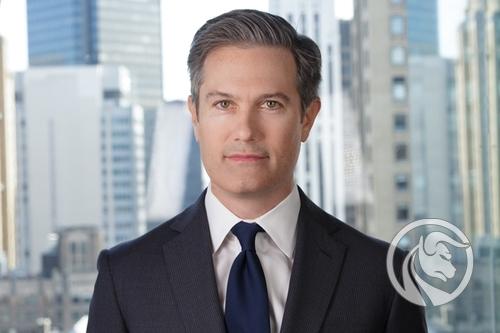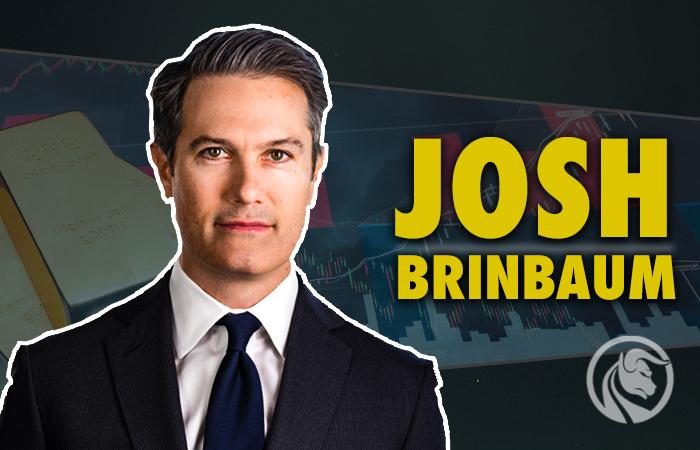Josh Birnbaum - the golden child of Goldman Sachs
The subprime crisis was a traumatic experience for many Americans. Rising unemployment coupled with falling house and stock prices caused many to lose their fortunes. The crisis also caused the collapse of one of the most respected investment banks - Lehman Brothers. However, for some, the real estate bubble and its bursting were an opportunity for huge profits. An example of the latter is Joshua “Josh” Birnbaum. He is currently the co-founder and CIO of Tilden Park Capital Management.
How did Josh Birnbaum become famous?

Josh Birnbaum. Source: Tilden
In the history of financial markets, there has been no shortage of outstanding traders who have made considerable wealth. However, not all of them became famous. In today's article, we will tell you the story of Josh Birnbaum. Thanks to him Goldman Sachs made billions of dollars before the subprime bubble burst. The profit would have been greater if the risk department had listened to this trader.
Josh Birnbaum has the classic advantages of a good trader: discipline, patience and the ability to associate facts. Of course, in the post-crisis era, politicians wanted to bask in the flashy glow. For this reason, they questioned employees of investment banks. It was often a media crib.
For his "accomplishments" he and three other Goldman Sachs employees were interrogated before the US Senate. Josh, along with other Goldman Sachs employees, were interrogated for 5,5 hours. The questions concerned e.g. why Goldman Sachs played on the decline of the subprime market and at the same time sold to investors instruments that only make money when the subprime market rises.
Birnbaum explained to Senators why he took positions betting on the decline in the US subprime real estate market in late 2006. He also had to explain what was the reason for the reduction of positions in the spring and summer of 2007. Josh himself recalled that he was then frustrated by the decisions of his superiors, who began to reduce their positions on the market. In his opinion, Goldman Sachs could earn 2-3 times more money if he did not close short positions.
What were Josh's trades?
Of course, there is often information about the profits of investment banks, there are numerous conspiracy theories. Banks are often accused of “they knew before” and they were looking for an opportunity to earn money. However, the deal Brinbaum made is not that spectacular. It was the result of painstaking analysis and not following the crowd. A lot of information about the transaction can be learned from the trader's hearing before the Senate.
Sam Josh joined Goldman Sachs shortly after graduating from the Wharton School at the University of Pennsylvania. Over the years, he climbed the career ladder in an investment bank. In 2006 and 2007, Josh Birnbaum worked in the Mortgage Department as an M.D. (Managing Director). He dealt with the analysis of the structured products market. In those years, trading in these instruments was very popular with investment banks.
Josh was working in the famous ABS (Asset-Backed Securities) department at the time. There, he dealt with taking long and short positions on this market at the request of Goldman Sachs bank clients. Very often the bank was the other party to the transaction. In order to protect the bank against excessive risk, the trading department also had to deal with taking hedging positions. What was the transaction like?
For example: a client ordered a long position on the subprime market. The bank was the other party to the transaction. As a result, he held a short position in the market. The risk department then had to decide whether to hedge its market exposure.
The main product that was traded at that time was the ABX (Asset-Backed Securities Index). In addition, Josh took positions on CDSs for individual assets called as “single name CDS”. Goldman Sachs was then also the market-maker of this market. This means that in order to ensure the liquidity of trading on the market, the bank stood on the other side of the transaction. For example, if a customer bought a CDS for a given asset, Goldman Sachs stood on the other side of the transaction. Then it was up to the risk management department whether the bank wanted to hedge its risk or not.
READ: What are Credit Default Swaps (CDS)?
As explained by Josh during a Senate hearing, between January 2006 and November 2006, clients began trading short on the ABX index. This meant that Goldman held a significant long position on the Asset-Backed Securities Index in November. The higher such an imbalance was, the bank's risk department asked for “book alignment” (Ang. flatten the book). Such a situation took place at the end of 2006. For this reason, Godlman Sachs started selling on the ABX market and started buying single name CDS as collateral for their positions.
It seemed that advanced models would value products based on mortgage loans well. However, Josh found that market value and fundamental value are very different. At first he thought he was missing something. However, in late 2006 and early 2007, Josh began to realize that the subrime market was overpriced. For this reason, he started building a short position in this market not to hedge, but to increase his exposure to the decline of the ABX index. But before he could, he had heated debates with the Mortgage Department about the advisability of such a deal.
After building the position, the real estate market began to lose value. As a result, the bank began to earn really big money on the position. However, the risk department wanted the short exposure to the market to be "trimmed". Josh tried to convince the risk management department that profits should not be cut but allowed to grow. In the end, the risk department won, which convinced the decision makers to reduce their positions.
Leaving Goldman Sachs and creating Tilden
Josh Birnbaum left Goldman Sachs in April 2008 after more than 14 years at the bank. He founded the company with Jeremi Primerwho worked as a research strategist at Goldman Sachs. Jeremy dealt with the creation of advanced financial models for various assets. In the second half of 2006, Primer and his team created a model for analyzing options for the newly created ABX (Asset-Backed Securities Index).
Birnbaum and Primer found a third partner. It was Sam Alcoff, who had known Josh since his days at the University of Pennsylvania. In 2008, Alcoff worked in Technology & Risk Management at Drake Capital Managenet (DCM). DCM was a hedge fund founded in New York. Sam Alcoff previously worked at BlackRockwhere he supervised technological solutions in the company.
In 2008 year To that began preparations for launch. He needed people and technology for that. For this reason, he started building systems for valuation, analysis and risk management. In the end, construction took 1,5 years. The company started investing in February 2010 with a capital of $25 million. The creators of the project themselves joked that they were the smallest fund with the largest infrastructure. However, very quickly the project began to grow. A year later, Tilden Park Investment Master Fund was established. In 2014, the project of the former Goldman Sachs trader had $2,3 billion in assets under management and 25 people on board. What characterized the fund at the beginning of its activity was consistency.
For the first 3 years, the fund recorded only two losing months. It has also achieved a cumulative rate of return in excess of 100%.
The activity of the Tilden fund is very flexible. He does not operate only in one market, but tries to invest where there is a chance for a high profit. The fund takes both long and short positions. Works in markets such as MBS, non-real estate ABS, CLO, stocks, CDS and bonds. Depending on market opportunities, Tilden seamlessly transitioned into different asset classes. In 2012, they invested in the credit market, and in 2013 they moved to the stock market.
How does Tilden look for market opportunities? It uses both top-down and bottom-up strategies. In the case of top-down strategies, analysts try to identify macroeconomic and market trends to tap into the trend. In the case of bottom-up analysis, the analytical team tries to select individual securities with the greatest growth potential. Very often Birnbaum used options to take a position. As I said myself:
"Just looking for cheap options."
Josh Birnbaum confirmed his fame when he got on the good side of trading CDS in April 2012. The other party to the deal was the famous "London Whale", which he worked for JP Morgan. The transaction ended with a high profit for Birnbaum and a huge loss for the American bank. It is estimated that the bad deals made by the American bank star cost JP Morgan as much as $6,2 billion.
Summation
Josh Birnbaum is one example of a trader who became famous with one trade. This does not mean that it is a typical one-trade star. In his later work at Tilden, he proved that his trades were no accident. They are the result of a well-thought-out strategy, patience and diligence. It's certainly not as fascinating a story as it is “Wolf of Wall Street”. Most likely, there will be no blockbuster about this trader's story. However, it is worth getting to know it to realize that investment banks have been able to attract great talents that an individual investor has to face on the market.






















![Forex Club – Tax 9 – Settle tax on a foreign broker [Download the Application] Forex Club - Tax 9](https://forexclub.pl/wp-content/uploads/2024/02/Forex-Club-Podatek-9-184x120.jpg?v=1709046278)
![Trading View platform – solutions tailored to the needs of traders [Review] trading view review](https://forexclub.pl/wp-content/uploads/2024/03/trading-view-recenzja-184x120.jpg?v=1709558918)
![How to connect your FP Markets account to the Trading View platform [Guide] fp markets trading view](https://forexclub.pl/wp-content/uploads/2024/02/fp-markets-trading-view-184x120.jpg?v=1708677291)
![How to invest in ChatGPT and AI? Stocks and ETFs [Guide] how to invest in chatgpt and artificial intelligence](https://forexclub.pl/wp-content/uploads/2023/02/jak-inwestowac-w-chatgpt-i-sztuczna-inteligencje-184x120.jpg?v=1676364263)


![WeWork – the anatomy of the collapse of a company valued at $47 billion [WeWork, part II] wework bankruptcy story](https://forexclub.pl/wp-content/uploads/2024/04/wework-bankructwo-historia-184x120.jpg?v=1711729561)
![Adam Neumann – the man who screwed up Softbank [WeWork, part AND] adam neumann wework](https://forexclub.pl/wp-content/uploads/2024/04/adam-neumann-wework-184x120.jpg?v=1711728724)





![How to transfer shares to another brokerage office [Procedure description] how to transfer shares to another brokerage house](https://forexclub.pl/wp-content/uploads/2024/03/jak-przeniesc-akcje-do-innego-biura-maklerskiego-184x120.jpg?v=1709556924)

![The most common mistakes of a beginner trader - Mr Yogi [VIDEO] Scalping - The most common mistakes of a beginner trader - VIDEO](https://forexclub.pl/wp-content/uploads/2024/03/Scalping-Najczestsze-bledy-poczatkujacego-tradera-VIDEO-184x120.jpg?v=1711601376)
![Learning patience: No position is also a position - Mr Yogi [VIDEO] Scalping - Learning patience - No position is also a position - VIDEO](https://forexclub.pl/wp-content/uploads/2024/03/Scalping-Nauka-cierpliwosci-Brak-pozycji-to-tez-pozycja-VIDEO-184x120.jpg?v=1710999249)
![When to exit a position and how to minimize losses - Mr Yogi [VIDEO] Scalping - When to exit a position and how to minimize losses - VIDEO](https://forexclub.pl/wp-content/uploads/2024/03/Scalping-Kiedy-wyjsc-z-pozycji-i-jak-minimalizowac-straty-VIDEO-184x120.jpg?v=1710336731)



![Trading View platform – solutions tailored to the needs of traders [Review] trading view review](https://forexclub.pl/wp-content/uploads/2024/03/trading-view-recenzja-300x200.jpg?v=1709558918)

![The most common mistakes of a beginner trader - Mr Yogi [VIDEO] Scalping - The most common mistakes of a beginner trader - VIDEO](https://forexclub.pl/wp-content/uploads/2024/03/Scalping-Najczestsze-bledy-poczatkujacego-tradera-VIDEO-300x200.jpg?v=1711601376)











